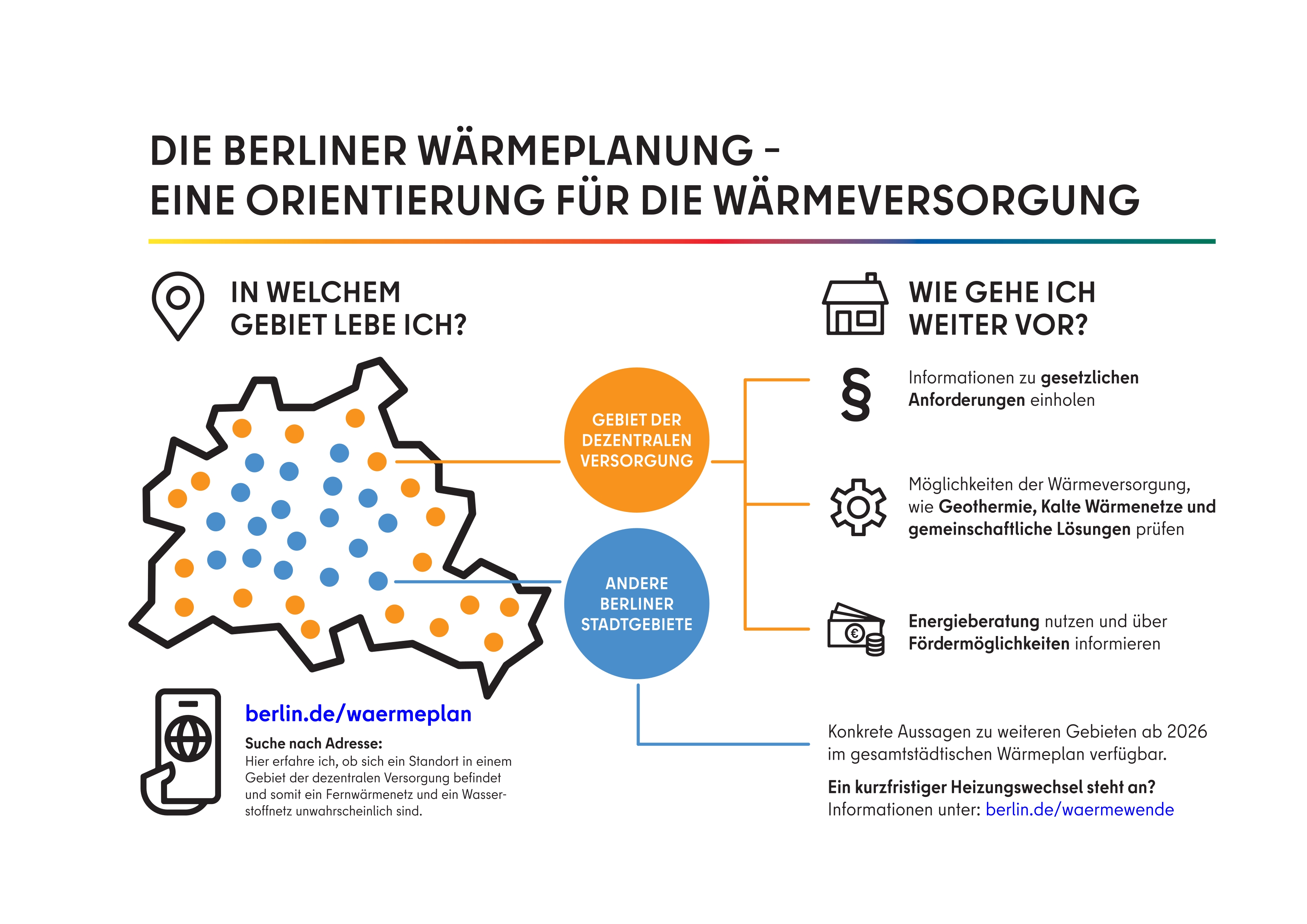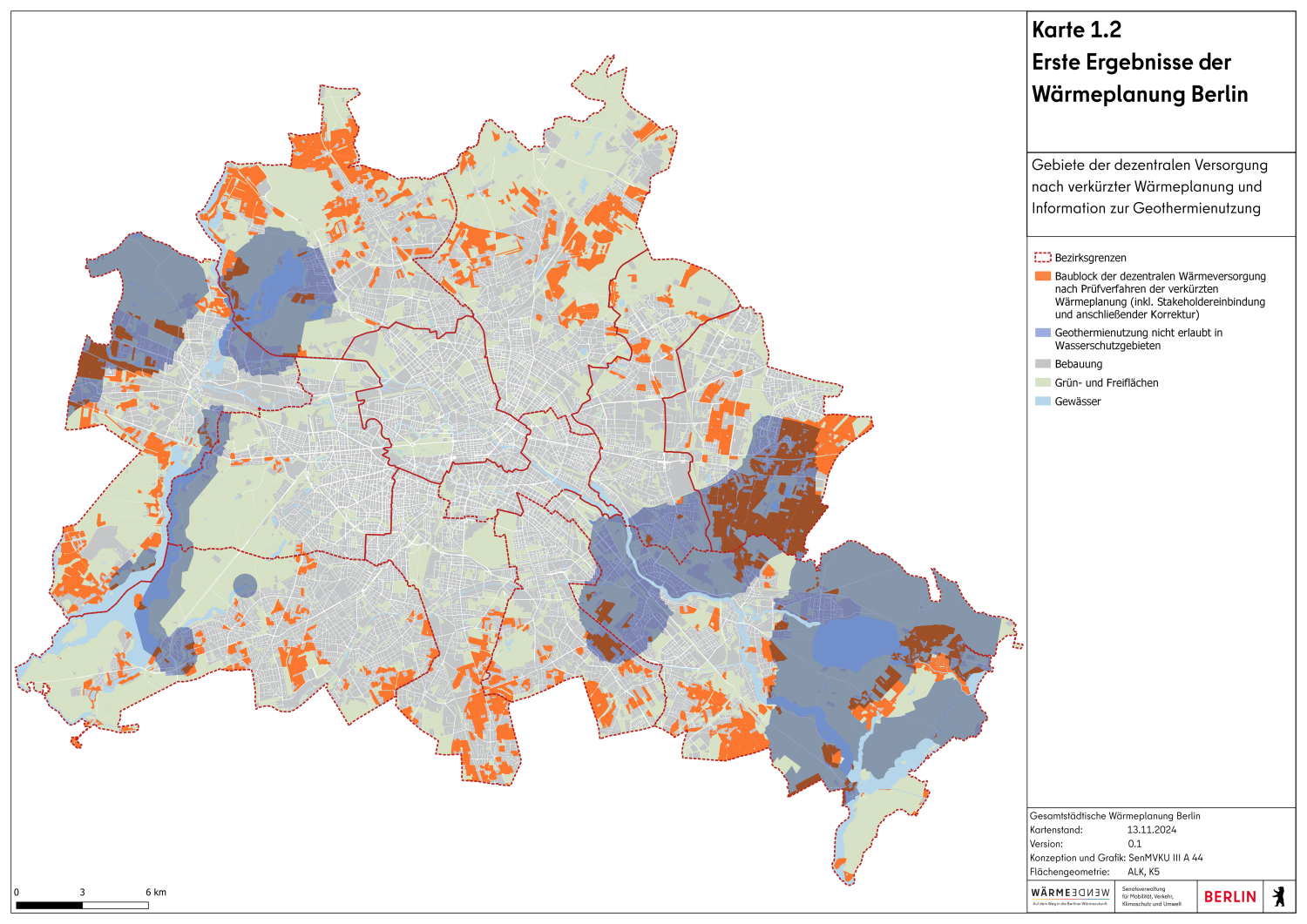As a main result of heat planning, Berlin’s city area will be categorized along various heat supply areas. There will be a distinction between district heating areas and areas for decentralized heat supply (primarily by heat pumps). In areas for district heating, existing networks will be densified and extended. There will also be a need for small and innovative district heating networks, based on renewable and waste heat sources. The heat plan will also provide clarity as to which renewable heat sources and waste heat sources need to be tapped in Berlin.
Citywide heat planning consists of different elements and phases:
The starting point for the heat planning process was a scientific heat strategy. It helped to identify the feasibility, prerequisites and appropriate instruments for the transformation of the heat supply. The study concluded with concrete recommendations for policy makers. Two workshops were held.
The next step is to collect comprehensive data, which will be incorporated into a Berlin heat register. The data is compiled via inventory data analyses and potential assessments, providing a comprehensive overview of the Berlin heating market. In addition to existing data sets on renewable energy systems, infrastructure and consumption data, actual potentials for other renewable heat sources and waste heat sources are determined.
The heat register, which will be launched in 2025, is intended to enable the planning of Berlin's future heat supply with the highest possible proportion of climate-neutral heat through the geodata-based mapping of heat consumption and potential. Existing potential data from renewable energies and waste heat flows as well as the development of the energy efficiency of the building stock will be utilised to support the development of heat planning.
In 2024, the first interim results of the process were published, which are primarily intended to give building owners an initial orientation as to which areas of the city are unlikely to be supplied with district heating and need to rely on decentralized (renewable) heat.
All information, including the inventory data analysis and potential analyses, the division of the urban area into prospective heat supply areas and a catalogue of possible implementation measures will be summarisedinto a heat plan by the responsible department and prepared in graphic and text form. Stakeholders are given the opportunity to comment on the draft.
The heat plan will be submitted to the Senate of Berlin for approval at the beginning of 2026. The heat plan will not be directly binding for building owners, however it is intended to provide orientation and planning security. In addition, the heat plan will be continuously revised and updated.
Heat planning and its implementation affect various stakeholders such as heating network operators, electricity network operators, building owners, industry and commerce, administration and public bodies. In order to involve them in the heat planning and to inform them about the different steps and results, they are integrated throughout the entire process.


